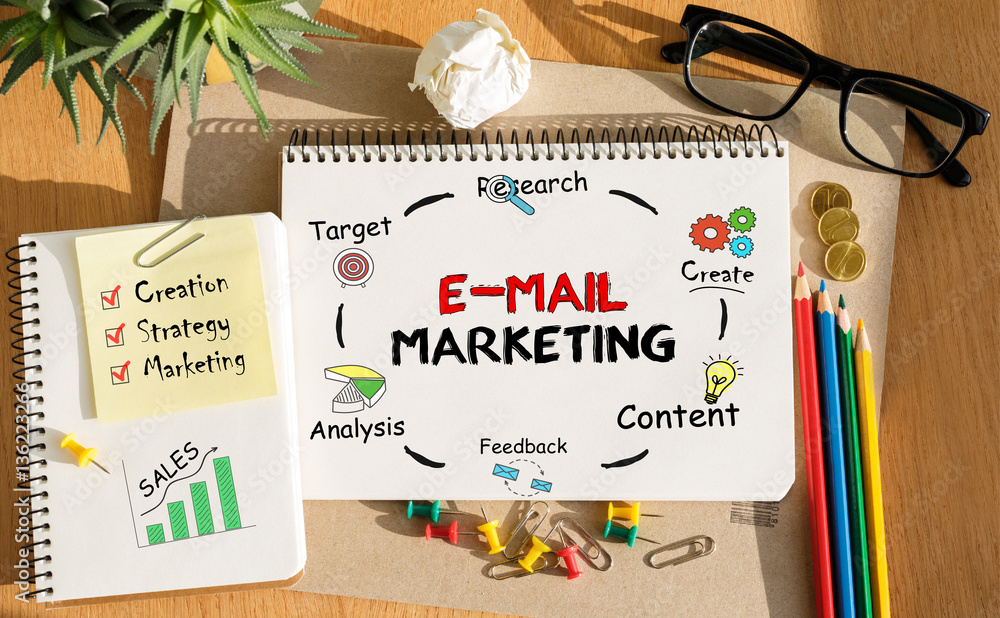Email marketing remains one of the most effective ways to engage with your customers. In this blog post, we’ll dive into best practices for creating attention-grabbing email campaigns, crafting compelling subject lines, segmenting your audience, and measuring the success of your email marketing efforts. Unlock the potential of email marketing for your business.
Introduction
Email marketing still stands as a potent tool for companies to engage with their clients in the modern digital world, where social media and instant messaging dominate communication channels. Email marketing is a powerful tool for generating, engaging, nurturing, and converting leads due to its capacity to send personalized communications straight to people’s inboxes. In this blog post, we’ll look at the best practices for email marketing so you can master it and maximize its benefits for your business.

Create Attention-grabbing Email Campaigns
To engage your customers and attract their interest with email marketing, attention-grabbing campaigns are a non-negotiable. Implement the following key practices to start creating attention-grabbing campaigns:
1. Understand your audience: Knowing who your target audience is is the first step in developing effective email campaigns. To segment your email list appropriately, define their interests, demographics, and habits. Make sure that your marketing material is relevant and increase engagement by keeping focus on specific categories.
2. Create compelling content: The substance of your emails should be interesting, succinct, and value-driven. Always include a clear call-to-action (CTA) alongside persuasive content, and eye-catching images. Building trust with your subscribers and providing them with useful information is a sure way to increase your click-through rates and conversions.
3. Mobile optimization: As smartphone usage rises, it is essential to make your email marketing campaigns are responsive to mobile platforms. Make sure your emails are designed to meet the needs of smartphone users. Ensure they have simple layouts, and clear language that can be read on tiny displays. User experience and engagement are directly tied to improved mobile optimization.
Creating Captivating Subject Lines
To grab the attention of your target audience and persuade them to read your emails, you must craft appealing subject lines. Here are some valuable tips to help you create effective subject lines:
1. Be succinct and captivating: Write clear, succinct subject lines. To get people’s attention, use language that is action-oriented, personalized, and urgent. Intriguing subject lines pique curiousity and persuades its recipients to open the email.
2. A/B testing: Test several subject lines to see which ones your audience responds to the most. A/B testing is distributing two versions of an email to a subset of your subscribers and evaluating their effectiveness. You can then tweak your subject lines to get the highest possible open rates.
Segmenting Your Audience
By segmenting your audience, you can customise your email campaigns and provide pertinent material to various subscriber groups. Here are some tips for efficiently segmenting your audience:
1. Personalization and relevance: Divide your email list into groups according to demographics, past purchases, level of participation, or interests. As a result, the likelihood of conversions increases when you send emails that are highly targeted and tailored.
2. Use automation and triggers to send emails to your subscribers based on specific actions or behaviors they have shown: To someone who abandoned their shopping cart, for instance, you could send a customized follow-up email. Delivering timely, pertinent communications that connect with your audience is made easier with behavior-based segmentation.
Measuring the Success of Your Email Marketing Efforts
Tracking your progress and measuring important indicators are essential for ensuring the efficacy of your email marketing initiatives. Here are a few crucial factors to bear in mind:
- Important metrics to monitor: Keep track of analytics like open rates, click-through rates, conversion rates, and unsubscribe rates. These analytics give you information about how well your email marketing performed and assist you in identifying problem areas that need improvement.
- A/B testing: To find out what appeals to your audience the most, continuously test various aspects of your emails, including the copy, CTAs, and send times. A/B testing offers data-driven insights that inform your choices and let you tweak your email campaigns for better outcomes.
Conclusion
Email marketing remains a potent tool for organizations seeking to connect, engage, and convert their audience. By implementing the best practices discussed in this blog post, you can unlock the full potential of email marketing for your business. Remember to create attention-grabbing campaigns, craft compelling subject lines, segment your audience, and measure the success of your efforts. Stay consistent, adapt to evolving trends, and watch your email marketing efforts thrive, driving growth and fostering lasting relationships with your customers.
